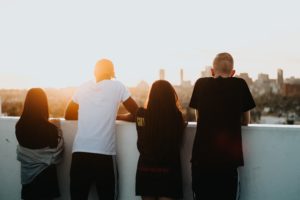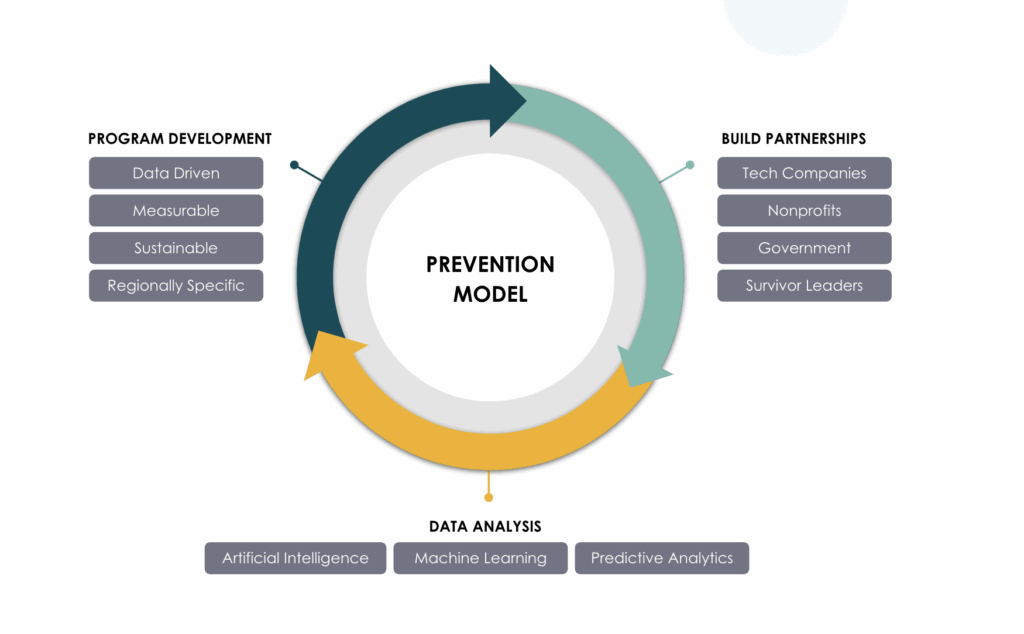What Do We Really Know About Human Trafficking in the US?

Over 20 years ago, the US passed federal legislation called the Trafficking Victims Protection Act (TVPA). This legislation legally defined what makes human trafficking illegal in the US, it also provided infrastructure, funding and resources to focus on the “4 P’s,” Prosecution, Protection, Prevention and added in 2009 was Partnership[1].
Since that time there have been thousands of programs developed across the US and millions of dollars given in an effort to stop human trafficking. Yet when we hear from Lived Experience Experts, case managers and law enforcement – they all tell us human trafficking is still occurring and possibly even growing.
What do we know about human trafficking in the US?
We know, through the National Human Trafficking Hotline, that there have been reports of human trafficking in all 50 states[2]. In 2023, the National Center for Missing and Exploited Children received more than 18,400 reports of possible child sex trafficking[3]. We know from countless research publications and testimonies from individuals with lived experience that traffickers target those who are most vulnerable. We know through both academic research and criminal case information that both sex and labor trafficking exist in the US.
What don’t we know?
We don’t know the prevalence of sex and labor trafficking in the US, that is to say, we don’t know exactly how many nor do we have solid measurements to approximate how many people are labor or sex trafficked in the US every year.
We don’t know definitively where trafficking is most likely to occur. If you were to Google the top five trafficking “hot spots” in the US, in the first two pages of results you’ll receive numerous different responses.
We don’t have a full understanding of why human trafficking occurs or what creates the conditions for human trafficking to occur.

So then, what do we do?
First and foremost, we do know that both sex and labor trafficking occurs in the US and that if one person is experiencing trafficking that is one person too many.
Second, to effectively prevent and combat it we need to constantly seek more and better data to responsibly inform efforts, policies and funding. At Prevention Now, one of our core values is Passion: Being deeply connected in both head and heart with the urgency of the important work to be done. We know that serving others is work deeply held in the heart, but to do it well and responsibly we must ensure that we are seeking facts and growing the body of knowledge.
Third, we all have a responsibility to listen and learn before acting. Listen first and deeply to those with lived experience of human trafficking and acknowledge the sacred honor it is to hold someone else’s story and experience. Don’t be afraid to read reports or articles on human trafficking but when you do, try to find where the information is coming from and the context of what is being reported.
At Prevention Now, our core mission is to leverage data to prevent human trafficking, which may seem challenging given all I’ve just told you that we, as an anti-trafficking movement, don’t know. But as we listen to those with lived experience, are thoughtful about what we do know and seek to responsibly grow the information to support the movement – we can create change. Data can often feel like a cold and removed component of such important work but data is actually individuals’ stories coming together to create powerful insights that can drive meaningful action.
For more information on sex and labor trafficking in the US:
· The Polaris Project provides information gleaned from their Human Trafficking Hotline, these are situations of potential trafficking and research conducted through the organization.
· Google Scholar is a free search engine to look for academic publications on the topic, some of which are peer-reviewed.
[1] https://www.justice.gov/humantrafficking/key-legislation
[2] https://polarisproject.org/resources/us-national-human-trafficking-hotline-statistics/
[3] https://www.missingkids.org/theissues/trafficking
